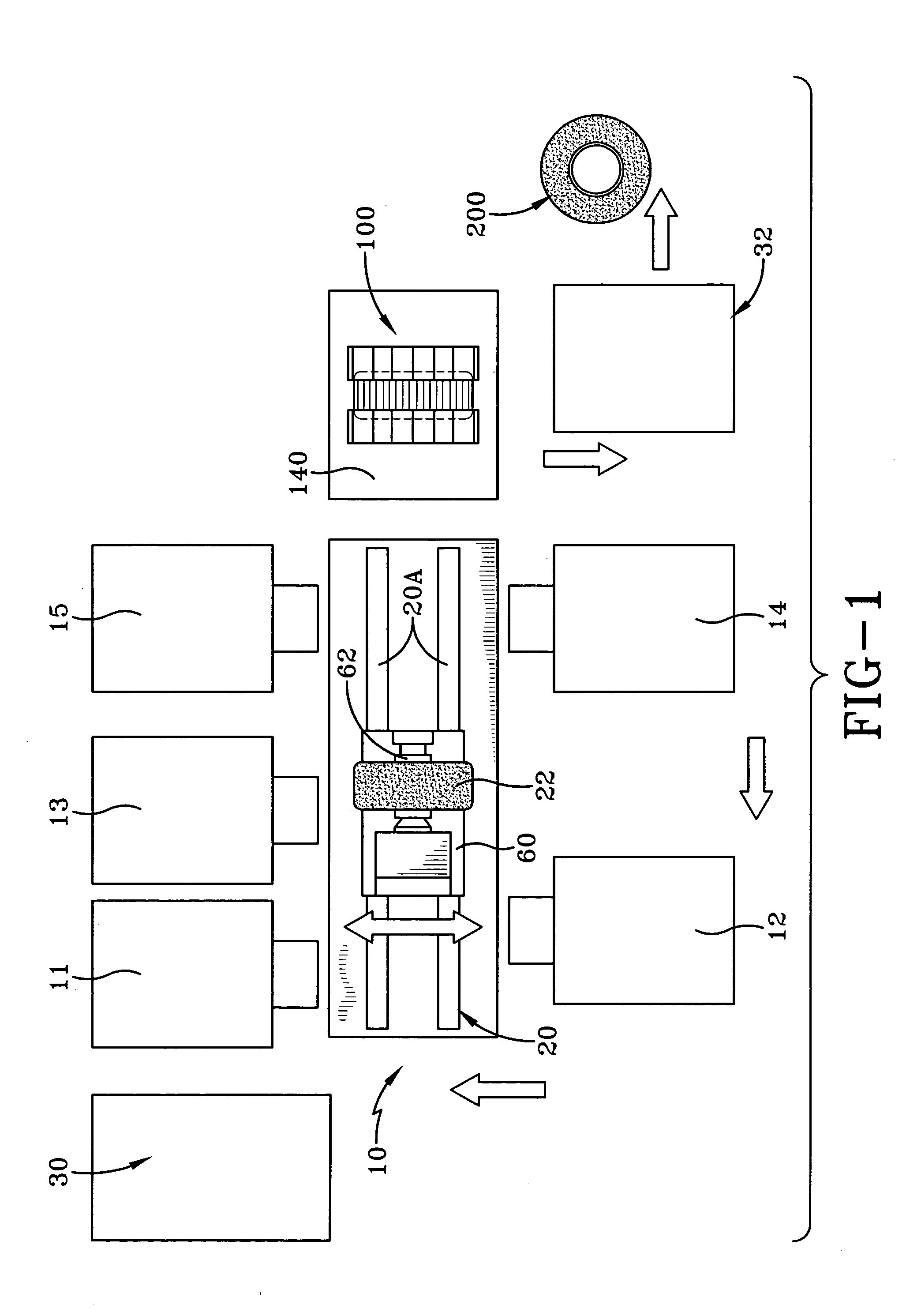Tire manufacturing module and method of manufacturing tires
a tire manufacturing module and tire technology, applied in the direction of belts, transportation and packaging, other domestic articles, etc., can solve the problems of aging, components are often stored, and require a large work area for two separate positions,
- Summary
- Abstract
- Description
- Claims
- Application Information
AI Technical Summary
Benefits of technology
Problems solved by technology
Method used
Image
Examples
Embodiment Construction
[0074] With reference to FIGS. 1 and 2 schematic views of an automated tire manufacturing module 10 according to the present invention are illustrated. This system or module 10 provides for the complete manufacture of pneumatic tires and provides up to two simultaneously operating tire building stations and one tire curing station in one module. This module 10 forms the tire carcass subassembly 4 and the tire belt tread subassembly 3. As shown in FIG. 7, these two subassemblies 3, 4 after being assembled on a detachable building drum 22 and inserted while on the building drum into a tire curing mold 50 after their assembly is completed. When at the tire curing mold, the mold 50 will then be closed and heated at a mold curing station 100 which permits the tires 200 to be cured or otherwise vulcanized and removed from the mold 50 and the building drum 22.
[0075] As shown the FIGS. 1 and 2 at the initial building of a tire there is a mobile tire building trolleys 60, 60A with a specifi...
PUM
| Property | Measurement | Unit |
|---|---|---|
| cord angles | aaaaa | aaaaa |
| angles | aaaaa | aaaaa |
| of rotation | aaaaa | aaaaa |
Abstract
Description
Claims
Application Information
 Login to View More
Login to View More - R&D
- Intellectual Property
- Life Sciences
- Materials
- Tech Scout
- Unparalleled Data Quality
- Higher Quality Content
- 60% Fewer Hallucinations
Browse by: Latest US Patents, China's latest patents, Technical Efficacy Thesaurus, Application Domain, Technology Topic, Popular Technical Reports.
© 2025 PatSnap. All rights reserved.Legal|Privacy policy|Modern Slavery Act Transparency Statement|Sitemap|About US| Contact US: help@patsnap.com



